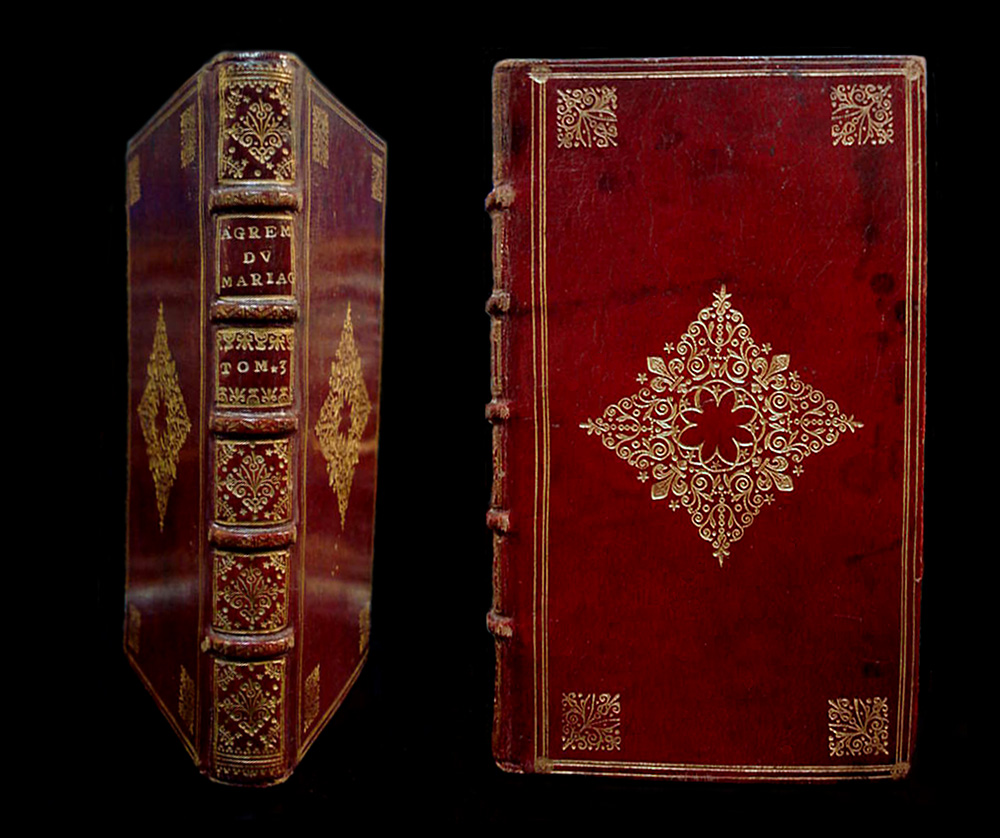

| This rare and unusual binding by Boyet was sold by auction on eBay for the absurd sum of 57,66 euros! (April 2009). Below is a copy of the sellers information for this item, which is very informative and professional. The only detail missing is the mention of Boyet. |

| This binding appears to be in very good condition and is a testament to Boyet's excellent work, choice of materials and impeccable finishing. More than three hundred years old, the leather still has a like new shine, and the gold tooling is as bright today as it was centuries ago. How can we put a price on such a rare treasure? Attributable to one of the most famous of all French binders renowned for his skills and workmanship. I don't think that one can actually put a price on such a piece, especially one so rare and probably from the early part of Boyet's career, possibly even made in 1694. On a previous page, I have touched upon the question of whether or not Boyet actually made the bindings himself or was only just an overseer. What we can easily observe is that the same tools and same methods were employed for decades, and it is these tools which will guide us in recognizing bindings "attributable" to the atelier of Luc-Antoine Boyet |
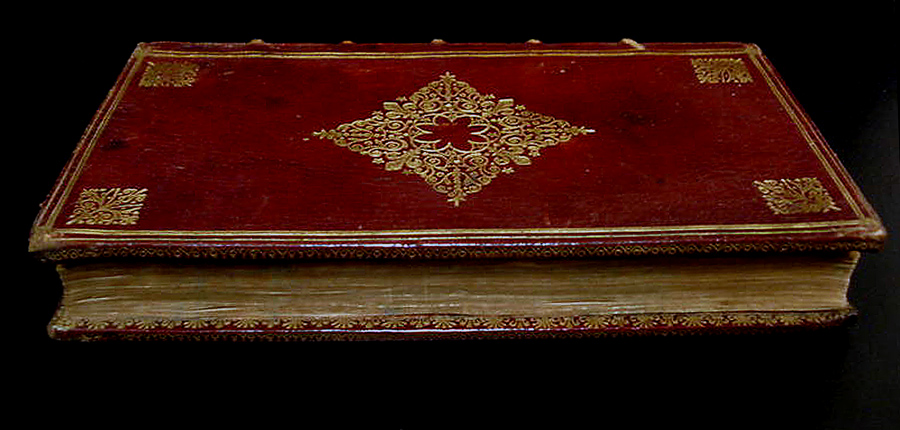
| On page 110 of their 2002 Paris publication entitled: Reliures françaises du XVIIe siècle : Chefs-d'oeuvre du musée Condé, Isabelle de Conihout & Pascal Ract-Madoux, have illustrated, under a title of "Fers du doreur de Boyet", a selection of rubbings of the more common tool imprints from bindings which they attribute to Luc-Antoine Boyet. In this limited presentation we find; 6 palettes (I - VI), 5 roulettes (A - E,; 6 large fleurons (1 - 6), and two tools (a, b) used in the construction of fans or wheels. Their rubbing of the fleuron #1 corresponds with the central fleuron on our spine compartments, as shown in the diagram below, as well as at the top of the page. |
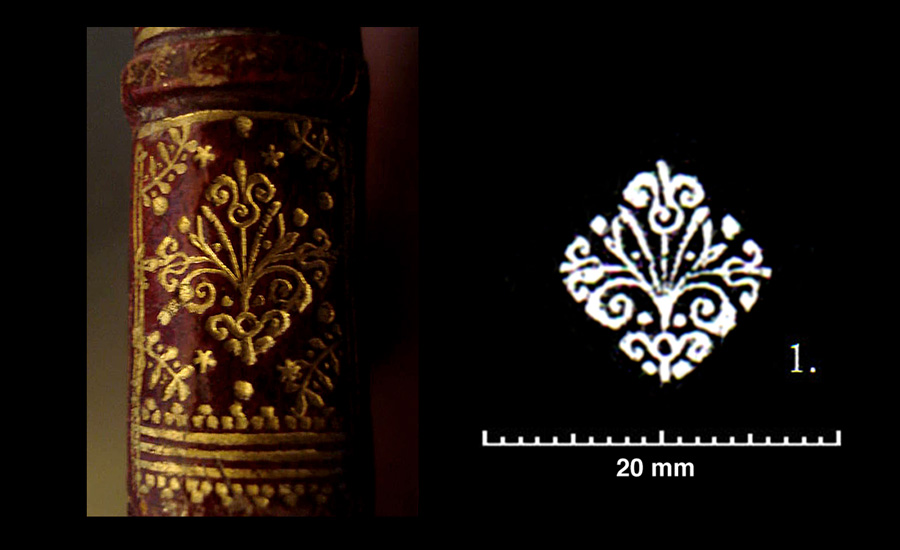
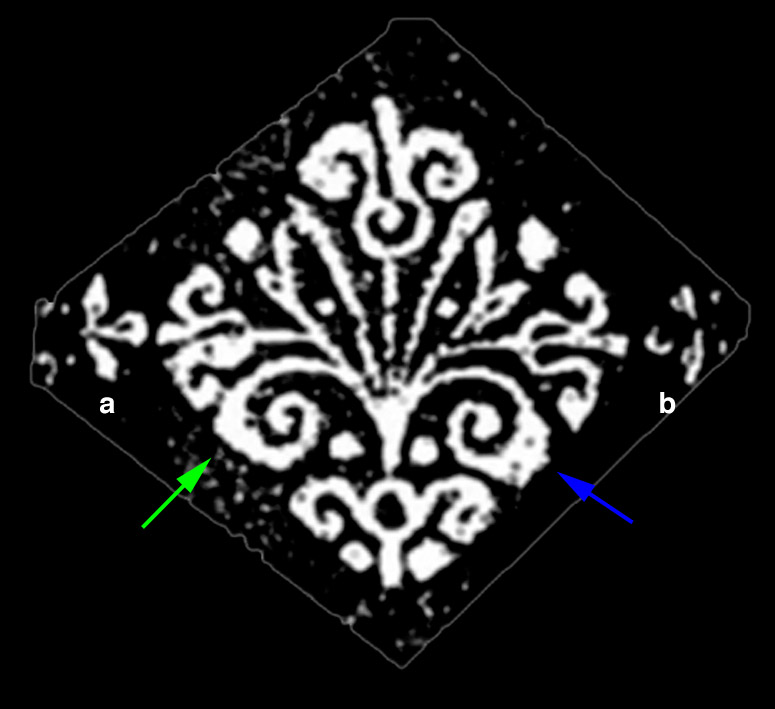
| In the enlarged Isabelle de Conihout & Pascal Ract-Madoux rubbing of fer 1 shown in Diagram 1, we see that they have included a small additional tool (shown at positions 'a' and 'b'). I don't think that this tool is part of fer 1 as it can be seen in different positions, in different spine panels. What is perhaps, more important is the fact that both spines appear to have this additional accessory tool. Further to this you will see that the spiraled leaf on the left (blue arrow) is noticeably smaller on the right side (green arrow) this is more noticeable in Diagram 2. For the moment I do not have a better photo of the 1694 spine however we can see that the palette used on the raised bands is probably the same tool and that the palette used in the labels (palette VII) is also the same ( see a 1693 example of this palette) |
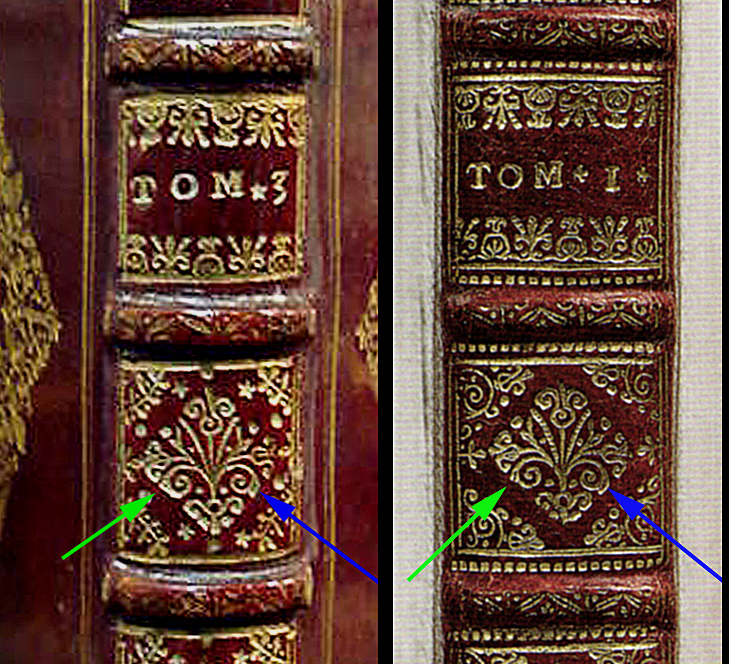
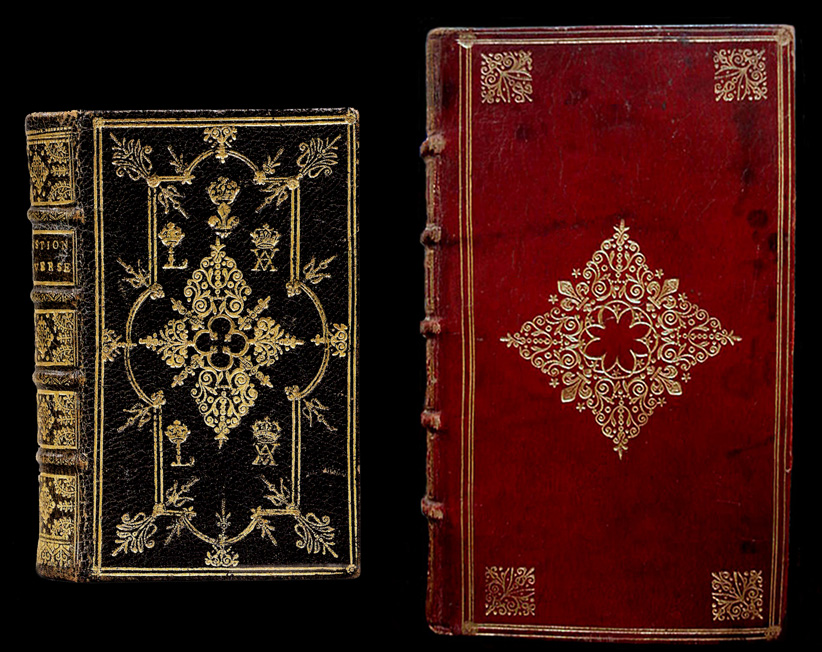
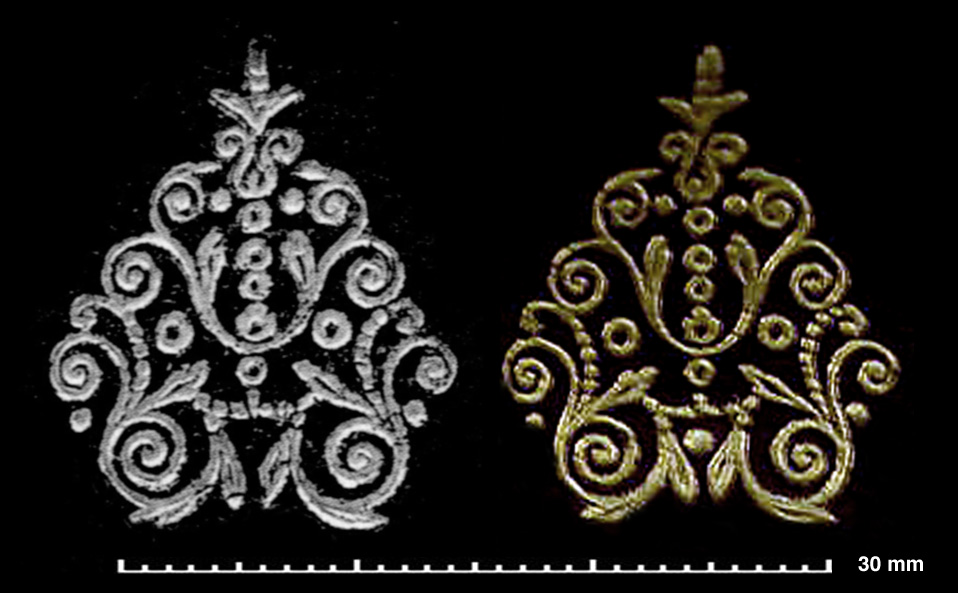
| In diagrams 3 and 4, we see that the centerpiece of both bindings incorporates an identical fleuron. The Isabelle de Conihout & Pascal Ract-Madoux binding #28 is an example of Boyet's retrospective Louis XIII-Anne d'Autriche bindings that are said to be based upon a 1635 binding by Mace Ruette. |
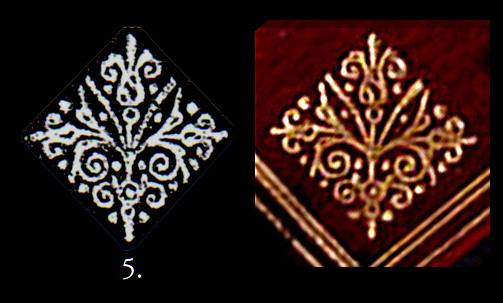

| In Diagram 6, I have resized the photo of the inner dentelle (15.5 cm wide at a resolution of 300dpi) and then reproduced below it, at the same scale, the Isabelle de Conihout & Pascal Ract-Madoux roulette C from their diagram Fers du doreur de Boyet. Even though the photo distorts the imprint with perspective we can still see that the two roulettes are probably the same. |

| In Diagram 7, I compare a sample of papier tourniquet from page 94 of, Reliures françaises du XVIIe siècle, with a sample from this 1694 example. In the Boyet examples described by Isabelle de Conihout & Pascal Ract-Madoux we notice that of the first 8 examples listed (which are from the period 1690 to 1700) 7 of the 8 contain endpapers of the papier tourniquet type. For more examples of this sort of endpaper see the link below Decorative Dentelle by Luc-Antoine Boyet. |
|
See also Luc-Antoine Boyet- 1693 Tool Identification or try this page. Decorative Dentelle by Luc-Antoine Boyet |
| Click on this link to return to Virtual Bookbinding | link to the home page of cyclopaedia.org |